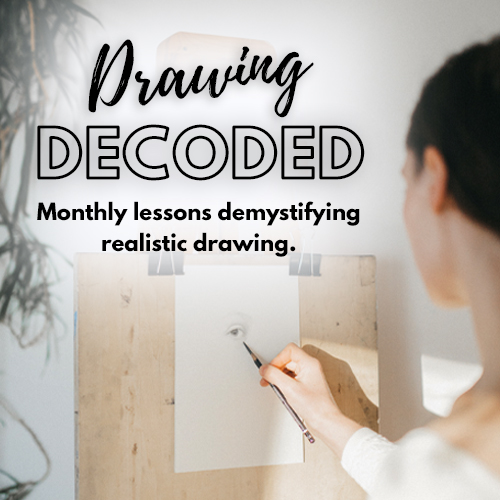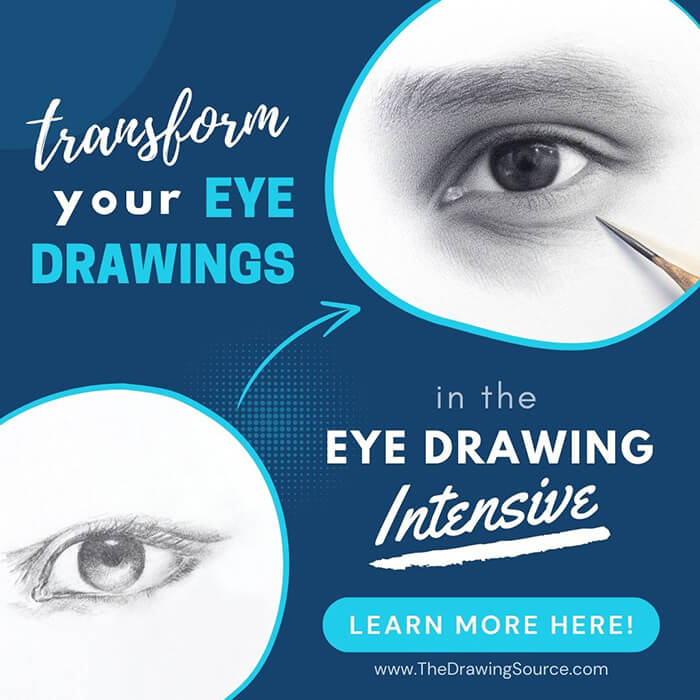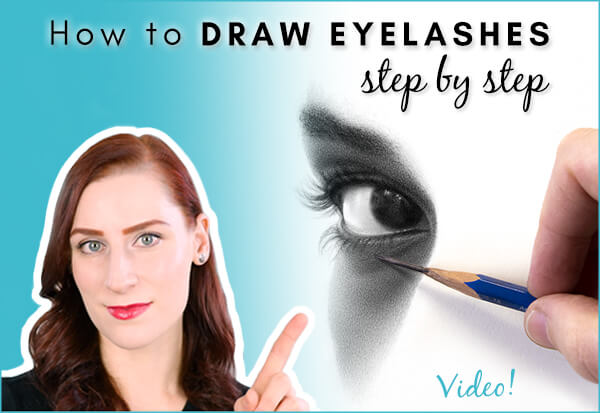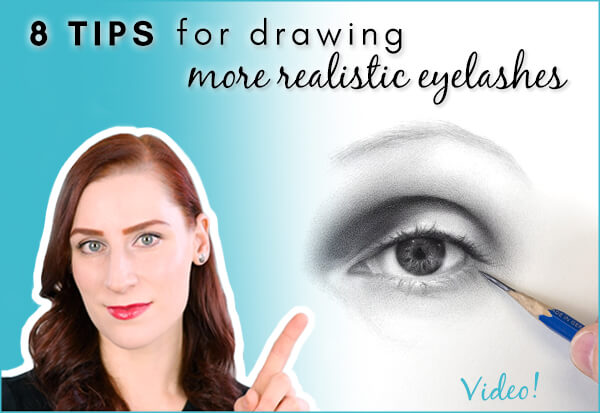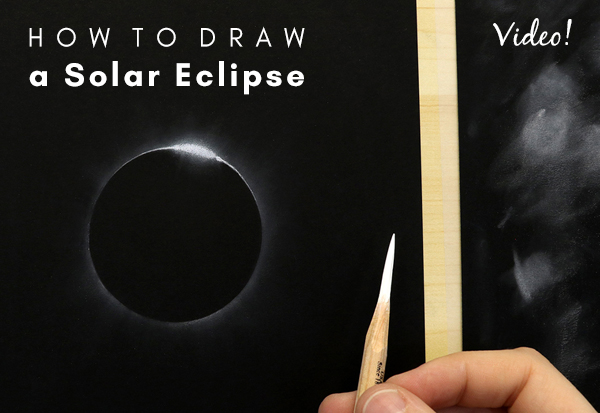- Home
- Drawing Tutorials
- Draw Lips Step By Step
How to Draw Lips Step by Step
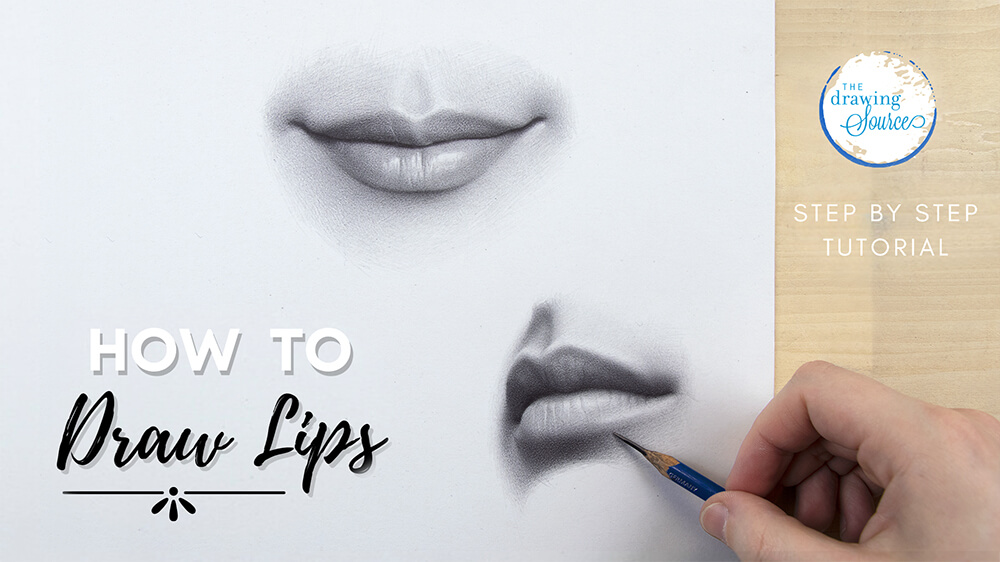
Learn to draw lips step by step in this tutorial!
Though the eyes are usually considered to be the most expressive facial feature, I would argue that the lips are a close second. (Maybe even tied for first!)
In this tutorial I demonstrate how to draw lips step by step, in a realistic and naturalistic style. Though a single tutorial can't possibly cover this subject thoroughly enough, I hope that it provides a compelling introduction! Stay tuned for future articles that delve deeper into the structure, anatomy, and placement of the lips on the head.
Finally, don't miss the downloadable resources at the bottom of the page, where you'll find the reference photo for this tutorial that you can draw from, as well as an infographic to remind you of the steps.
For related articles on drawing other facial features, check out:
The 6 Most Common Eye Drawing Mistakes (and how to avoid them!)
How to Draw Ears on Toned Paper
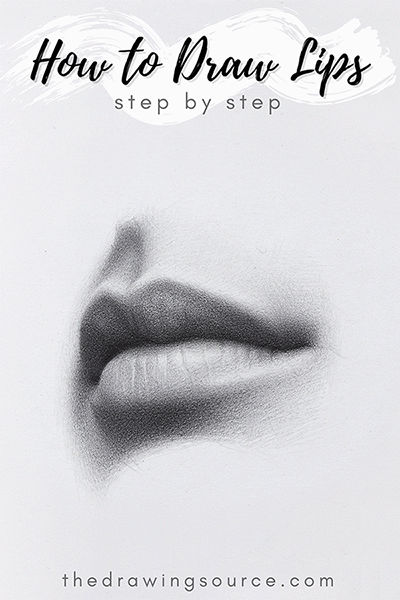 Animated GIF of the tutorial steps
Animated GIF of the tutorial steps
Materials Used in this Tutorial
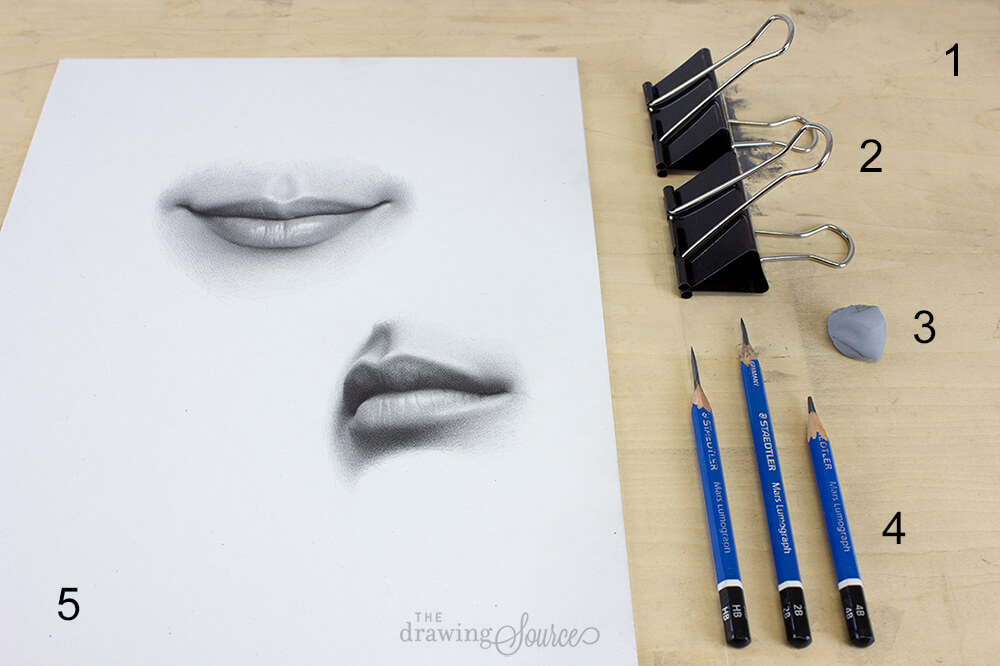
1. Drawing Board: This is a sturdy but lightweight drawing board made by Helix.
2. Bulldog Clips: For attaching my paper to my drawing board (fabulously easy to remove for taking tutorial photos!)
3. Kneaded Eraser: I'm using the General's Jumbo Kneaded Eraser. (Watch my video on 3 useful kneaded eraser techniques for realistic drawing here.)
4. Drawing Pencils: I am using HB, 2B and 4B Staedtler Mars Lumograph graphite pencils for this drawing.
5. Drawing Paper: I'm drawing on a sheet of Canson Recycled Bristol paper.
The Basic Structure of the Lips
Though I'll cover the anatomy of the lips in
depth in a future lesson, I want to point out the basic structure and features that are important in this particular drawing scenario.
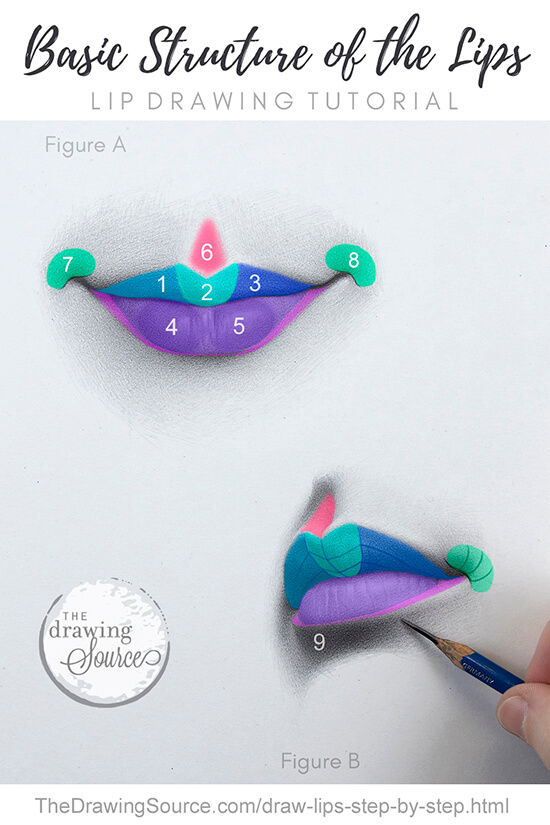
The upper lip consists of three major forms: the central
portion (the heart-shaped tubercle) pictured at 2, and the two sides that slope downwards
from the tubercle (1 and 3 in the image above).
Above the tubercle and just below the nose is a groove called the philtrum (6).
The lower lip has two bulbous, pillowy forms, indicated at 4 and 5. Enveloping them is a ridge around the bottom of the lip, that reaches from one corner of the mouth to the other.
At each corner of the mouth is a node, or mediolus (pictured at 7 and 8). Several muscles attach in this area, creating a fleshy protrusion that is subtly peanut-shaped.
Between the lower lip and the chin is a furrow called the mentolabial sulcus (pictured at 9). Notice the angle change here: there is a ‘step down’ from the plane of the lower lip to the plane of this furrow. Because of this plane change, this furrow is often in shadow (though it really depends on the lighting).
How prominent these features are depends on the person (each
set of lips is unique), how the lips are lit (different lighting can
accentuate or diminish certain features), and the position of the head. For example, in the image above, notice that as soon as the head turns from a front view (Figure A) to a three-quarter view (Figure B), we see the forms of the lips start to overlap and change shape.
Free Video Course on Essential Drawing Concepts
Throughout this lesson I refer to essential drawing concepts and stages of the drawing process. Learn about them in my free video course to get the most out of this tutorial!
How to Draw Lips Step by Step
Step 1: Establishing Proportions and Angles
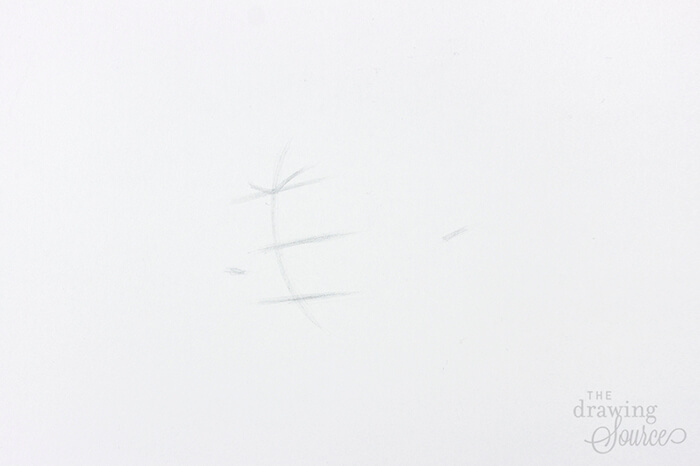
I start by establishing the basic proportions and angles of the lips.
I'm using the "guess and check method", meaning that I estimate a proportion
and then check how accurate I was through some sort of measurement (some of which I mention below). This is a great way to train
your eye so that you can eventually rely more on it rather than having to constantly measure.
What was I paying attention to here, and how did I check these proportions and angles? Let's take a look:
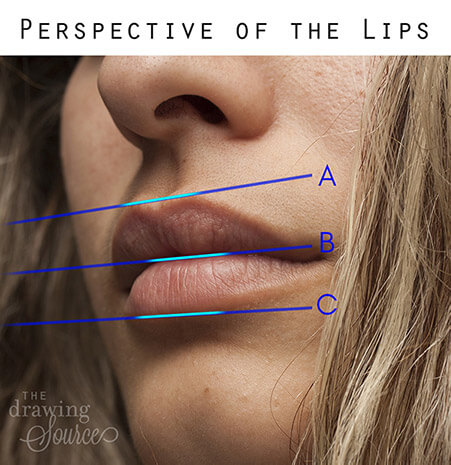
1) The Subtle Perspective of the Lips
Notice the subtle perspective of the lips. If I were to continue extending lines A, B and C to the left, they would eventually converge at a single point.
To see the difference in the angles more clearly, compare them to a line that you know is horizontal - in this case, the top or bottom of the picture.
When I compare Line A to the top edge of the picture, it becomes clear that Line A is tilted down and to the left.
Next, if I extend my pencil, hold it up to Line A, and compare it to Line B, I notice that Line B is at less of an angle. To estimate the angle of Line C, I can either compare it to Line B or to the bottom edge of the picture, which I know is horizontal.
When drawing from life, you can use a similar technique to evaluate angles: extend your arm holding your pencil, line it up with a horizontal line close to your subject, and then, doing your best to keep your arm and pencil horizontal, bring it down to the angle you want to evaluate. Look to see the difference between the horizontal line of the pencil and the angle you wish to draw.
Next, I can use comparative measurement to check the height and width of
the lips. (Learn how to use comparative measurement in my free mini-course.) I start by looking for similar, or equal measurements:
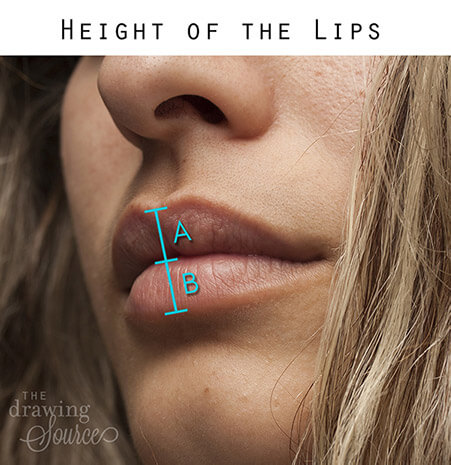
2) The Height of the Lips
Height A = Height B. The height of the upper lip (when measured from the bottom of the philtrum to the bottom of the tubercle) is equal to the height of the lower lip (when measured to the top of the shadow, or mentolabial sulcus).
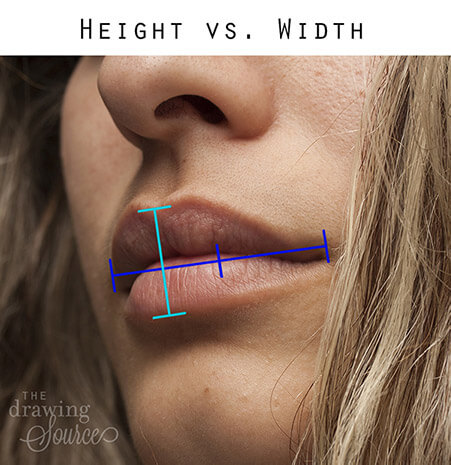
3) Height vs. Width of the Lips
The width of the lips is double their height (when the height is measured from the bottom of the philtrum to the top of the mentolabial sulcus).
Did I know that these proportions would work out so conveniently? Not at all! I look for proportions that work out nicely, so that I have an easy time indicating them accurately on my drawing.
When using this method of measurement, it's important to remember the specific points from which you measure. For example, notice that I specify when I measure from the bottom of the philtrum, because if I were to measure from the highest point of the lip, it would skew my measurements.
How to Draw Lips Step by Step
Step 2: 'Sculpting' the Lips using Straight Lines
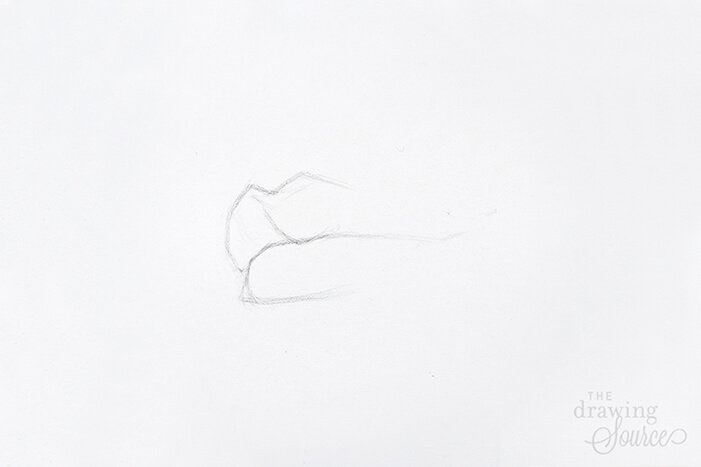
Next, I started drawing the left side of the lips using straight lines.
I often think of drawing as 'sculpting with a pencil': As you draw each line, imagine that you're tracing it over the volume of the form. How steep is the form? How quickly or slowly does each angle turn?
I'm looking for the most evident angle changes at this stage. Each time I add an angle change, it results in a 'point'. As I add these 'points', I check their alignment using an axis line.
For example:
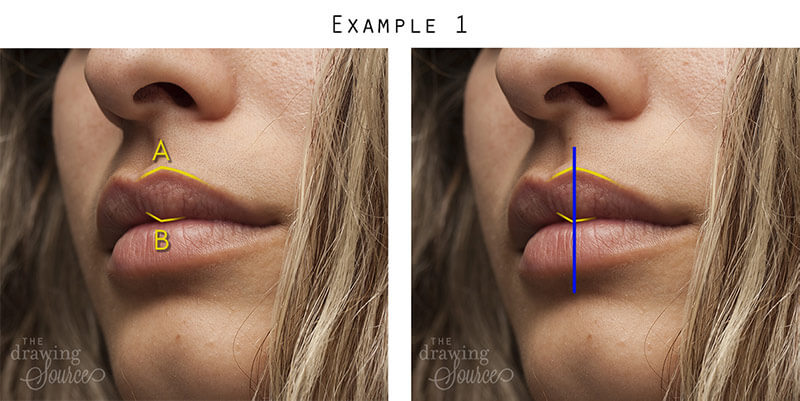
Example 1: If I drop a vertical axis line at Point A, where in relation to it is Point B?
Looking at the left image, I thought that Point B looked like it was further to the left. However, it's actually in line with Point A.
'Dropping a vertical line' can be done using a plumb line (a weighted string), a knitting needle, or simply your pencil.

Example 2: I use the same process to check the relationships between this set of points. When I line up my pencil with Point A, I notice that it is slightly to the left of Point B.
I can now check if the distance between Points A and B is the same on my drawing, and modify it if needed.
How to Draw Lips Step by Step
Step 3: Drawing Overlapping Lines
Overlapping lines are an essential part of a convincing block-in. They start creating depth and dimension in your drawing before you even add
tone, by showing what form is in front of another form. Watch Lesson 4 of my free mini-course to learn about this essential drawing concept.
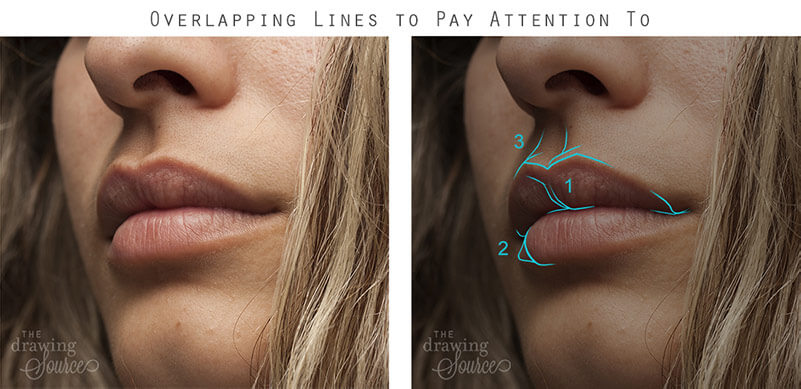 How to draw lips step by step: overlapping lines to pay attention to
How to draw lips step by step: overlapping lines to pay attention to
A few of the essential overlaps I've pointed out in the image above:
- The tubercle is in front of the (model's) right side of the lip.
- An overlap occurs between the left (our left) pillowy form of the lower lip and a portion of the ridge of the lower lip that is slightly visible behind it. Important note: the line between these two forms is a soft edge! I'll discuss edges later in the tutorial.
- In area 3, the peaks of the lip are closest to us. Behind it is the ridge along the upper lip, and behind that is the philtrum.
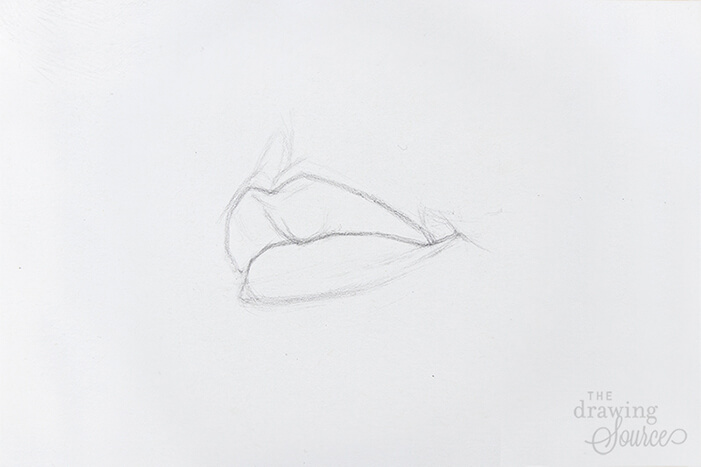
Notice that I don't draw any sharp, dark lines where there are soft edges. (For example, the overlap in the lower lip, and the bottom edge of the lower lip, which ends in a soft value transition.) If you don't see a sharp line, don't draw one! You will only add work for yourself, since you will have to soften the line later on, once you start adding values to your drawing.
How to Draw Lips Step by Step
Step 4: Adding Shadow Shapes
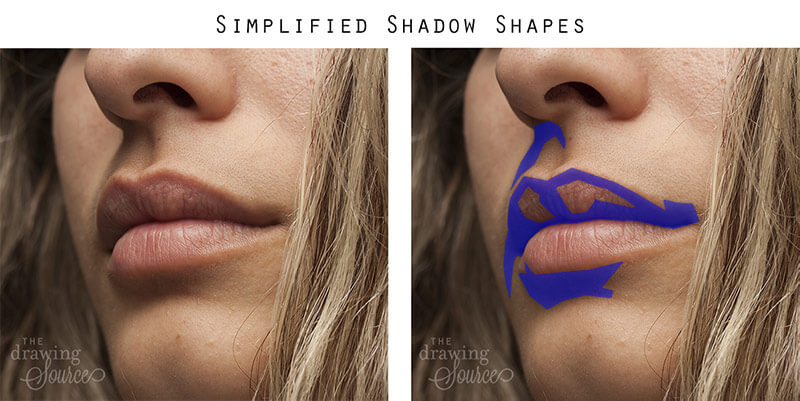 How to draw lips step by step: simplified shadow shapes
How to draw lips step by step: simplified shadow shapes
To finish a block-in, I like to indicate the shadow shapes of my subject. Notice the simplified way that I'm viewing and drawing in the shadow shapes at this point. I'm looking for and drawing the major angle changes in the shadow shapes, just as I have been drawing the rest of the block-in.
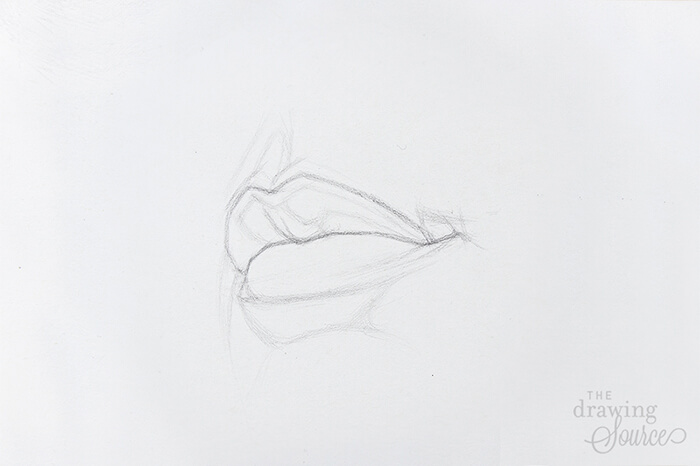
Can these shadow shapes be drawn more specifically? Absolutely, but I'll do so once I get to the
value stage, since some of the initial line drawing often becomes obscured once you start adding tone.
How to Draw Lips Step by Step
Step 5: Starting to Add Values
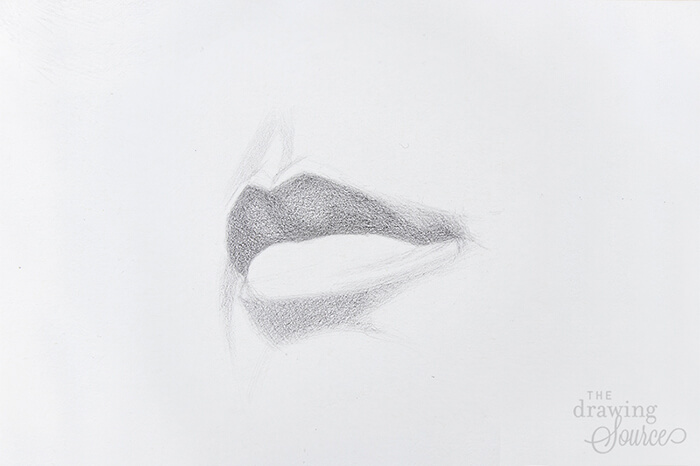
I begin adding values to my drawing by filling in the darkest, most obvious shadow shapes. I'm using light values so that I can check the accuracy of the shadows shapes before committing to them (it's often easier to determine how accurately you drew a shadow shape once it's filled in with a flat value).
Because the values in these lips are quite subtle, I'm going to build them up in layers. This gives me more time to adjust proportions and value relationships, and gain confidence in my drawing before adding any dark accents that may be difficult to erase.
How to Draw Lips Step by Step
Step 6: Building up the Values
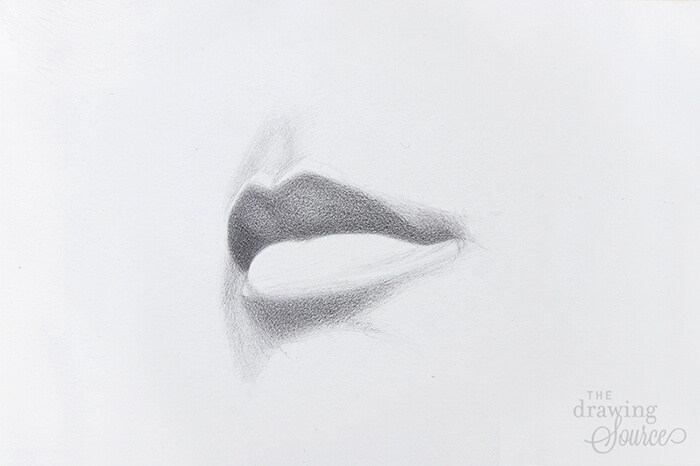
I continue building up and slowly darkening the values in the lips. I'm noticing and starting to establish some of the gradations in the upper lip and at the corners of the mouth.
How to Draw Lips Step by Step
Step 7: Analyzing the Value Range
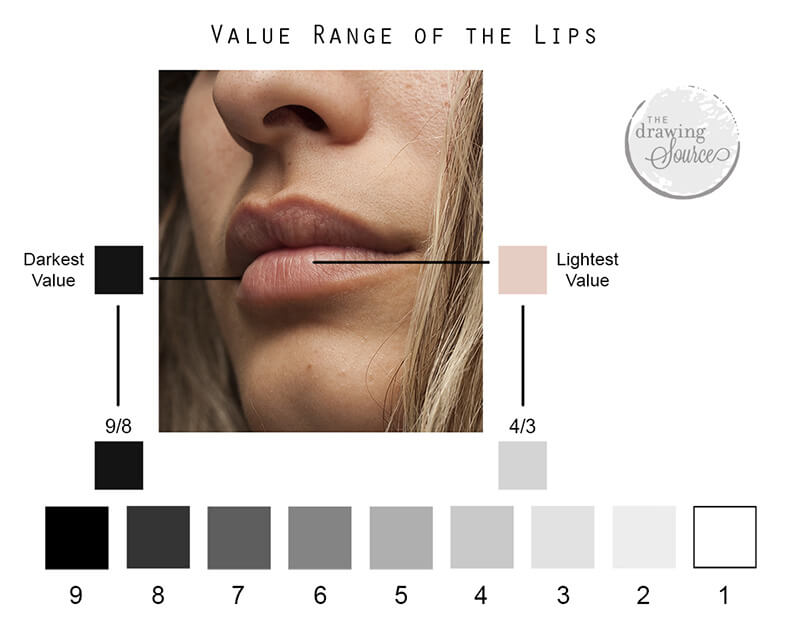 How to draw lips step by step: analyzing the value range of the subject
How to draw lips step by step: analyzing the value range of the subject
Notice that the value range in the lips is not a full value range (so, not Values 1 through 9 on the value scale)!
The lightest value in the lips is between a Value 3 and 4 on the value scale. How can you determine what value the highlight is? Though I made it easy to see what value the color of the lip is in the highlight area through the magic of Photoshop, you could just as easily squint at the subject and notice how much darker the highlight is than the white background of this webpage.
The darkest value in the lips isn't quite at value 9 (the darkest possible value) either. It's aaaalmost there, but I would still call it somewhere between Values 8 and 9.
The value range of a subject is important to determine because it gives
me the clarity to cover
up the white of the paper quickly. Furthermore, there are many subtle
middle values in the lips. Drawing in the correct 'value extremes', or
lightest and darkest values, will give me two distinct benchmarks to compare the rest of my values to.
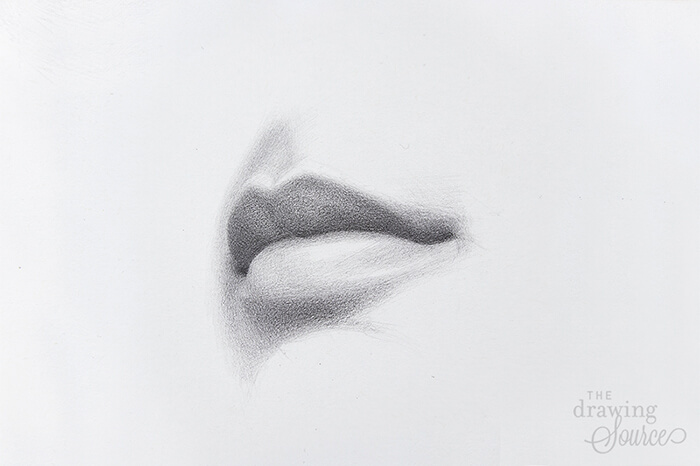
Now that I know that the lightest value is between a Value 3 and 4, I could technically darken my entire drawing to a value 3/4. I didn't go quite that far in this step. I want to maintain the correct value relationships between all the values in the lips, and because I know that my shadow shapes need further darkening, I prefer to gradually build up the entire drawing as a whole so that it looks cohesive.
However, I did darken the lower lip, drawing in a few gradations and leaving only the general highlight areas as the white of the paper (since I'm not yet confident in their exact locations).
How to Draw Lips Step by Step
Step 8: Drawing the Value Extremes
As I build up the values, I've been keeping the drawing very 'open' -
malleable and easy to change - by keeping the edges fairly soft and not
adding any of the darkest accents yet. When dark accents are very
obvious and easy to locate, I like to start with them and draw them as
soon as possible. However, when they are more subtle, as they are here, I
prefer to build up to them.
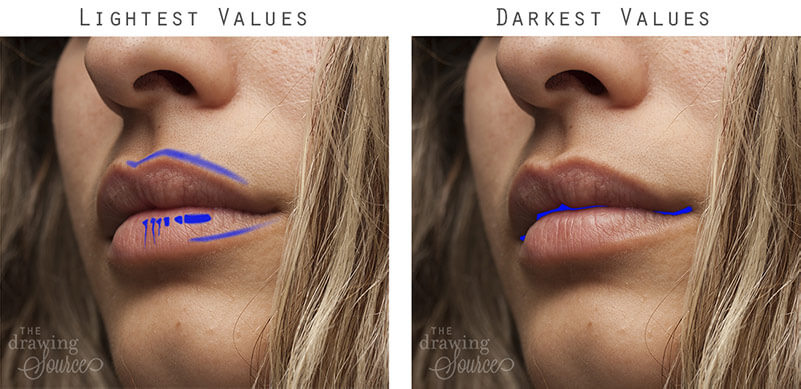 How to draw lips step by step: the lightest and darkest values in the subject
How to draw lips step by step: the lightest and darkest values in the subject
Notice that the lightest values in this subject are found in the ridge of the upper lip, the highlights in the lower lip, and the ridge of the lower lip (see the image below).
The darkest values in this subject are found where the upper and lower
lips meet. However, the upper and lower lips don't meet in a simple,
dark line. Notice that there are areas where it is darkest (as shown
above), and areas where it lightens slightly. These differences are
important to notice and indicate in our drawings for them to 'read' as
realistic and naturalistic.
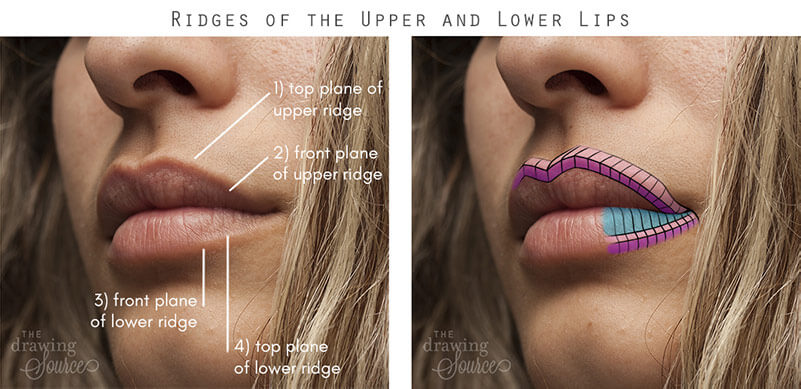
Notice that the top planes of both ridges (at 1 and 4) are catching light, while the front planes of both ridges (that are facing us at 2 and 3) are in shadow.
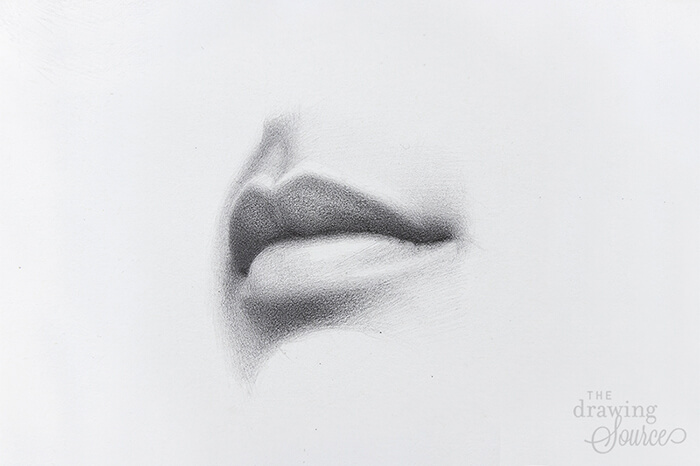
Here I have more specifically drawn the line where the lips meet. I'm paying close attention to its angle changes, value and edge shifts. I have also started defining the ridges of the upper and lower lip.
How to Draw Lips Step by Step
Step 9: Analyzing Edges
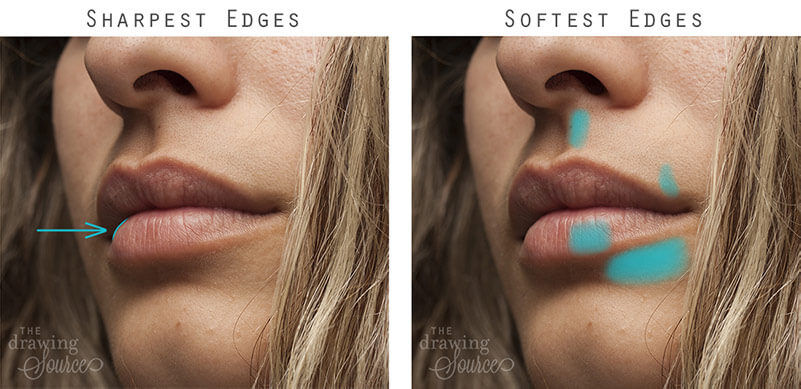 How to draw lips step by step: the sharpest and softest edges
How to draw lips step by step: the sharpest and softest edges
Notice that the lips consist mostly of various degrees of soft edges, which makes this a trickier drawing scenario. (Unfamiliar with the concept of edges? Watch Lesson 6 of my free mini-course!)
Fortunately, we can make out the sharpest edge quite clearly: it's along the left side of the line where the lips meet (upper left image). Test it yourself! Squint at the image and check to see which edge remains the sharpest.
The next sharpest edge after that is perhaps the right corner of the mouth, or the overlapping line that separates the ridge of the upper lip from the philtrum (it's light, but it's fairly sharp!)
And the softest edges are ... essentially everywhere else!
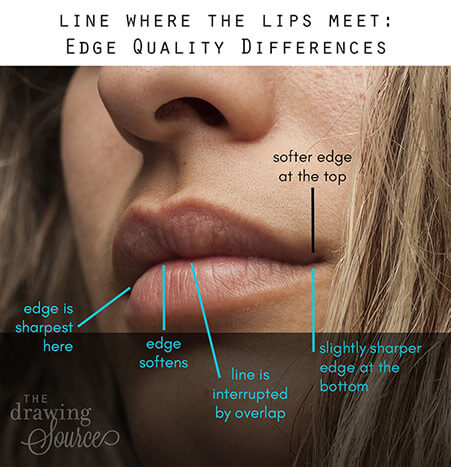
I want to point out the differences in edge quality in the line where the lips meet. This is not a simple, solid line with a single edge quality! If we travel along this line from left to right, it first begins with what we've identified as the sharpest edge. The edge softens as it approaches the tubercle. The line is then interrupted by the tubercle slightly overlapping the lower lip.
Notice that this line actually has two edges! This is most visible at the right corner of the mouth: do you see that the line at the corner of the mouth has a slightly softer top edge, and slightly sharper bottom edge?
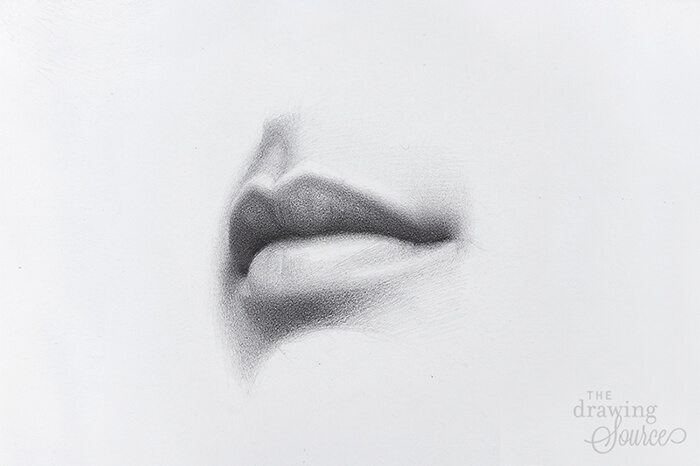
Here I have clarified the sharpest edge, and am working on creating a diverse range of softer edges throughout my drawing. I've also started creating more subtle 'patches' of value along the upper lip, which is starting to create a more convincing 'lip texture'. All texture is simply a specific pattern of values and edges. If you can learn to observe it closely, you will be able to draw it.
How to Draw Lips Step by Step
Step 10: Adding Smaller Details
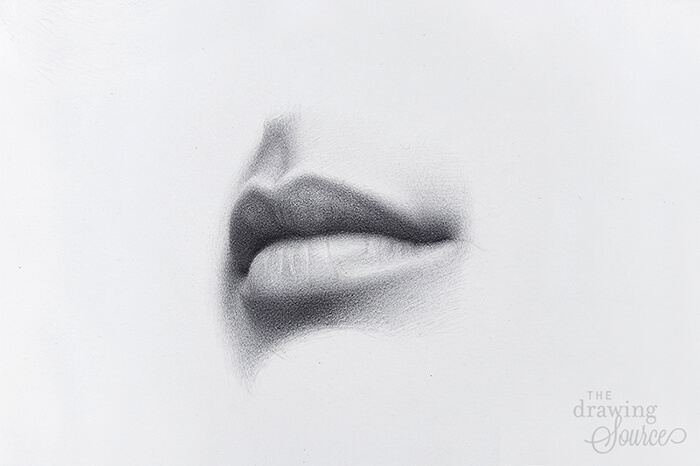
At this point I'm finding some of the minute details, such as the subtle lip lines, or lip wrinkles, particularly in the lower lip. Notice that these follow the form of the lip, like cross-contour lines. This makes them important to draw correctly, or else they may start to flatten the form.
How much detail you include in your drawing is completely up to you. From life, you probably wouldn't see more detail than this (of course, depending how close you were sitting to your model). From a photograph, you could include tremendously more detail than this. It comes down to personal preference, and to how you approach your drawing.
Usually, even when I draw from a photo reference, I go about it as though I'm drawing from life in the sense that my drawing process is the same, and I draw approximately as much detail as I would draw from life.
Personally, hyperrealism doesn't appeal to me. Ideally, I prefer to create a 'naturalistic' looking drawing that lies in a kind of liminal state: appearing photographic at first glance or in a few areas, and revealing its true nature in others. (Does that always work? Not at all! But it's something I aspire to.) However, again - this is completely a matter of personal preference!
If you're struggling to figure out how much detail to include, try squinting at your reference photo (or your subject when drawing from life!). Notice how much detail is lost when you do so: this shows you how much detail you can leave out, yet still achieve a realistic drawing.
How to Draw Lips Step by Step
Step 11: The Finished Drawing
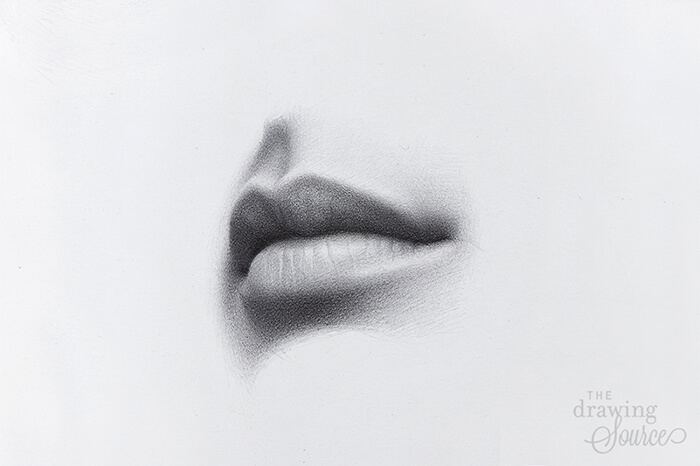
And here is the finished drawing!
The process of drawing the lip lines was slow and methodical. I used the axis-line method of measurement (from the beginning of the tutorial), checking to see what other element each wrinkle was in line with. Do they have to be exact? Not at all, and I'm sure that they aren't.
What's important to the realism of the drawing is that they have enough variation to look natural! Notice how different each one is in spacing, value, angle, and edge. If I had drawn them all similarly-spaced, at the same angle, and the same sharpness, my drawing would have quickly started to look generic and less convincingly believable.
I hope you enjoyed this tutorial on how to draw lips step by step!
What next?
Why not download the reference photo for this lesson, as well as an infographic to remind you of the steps, and practice drawing lips yourself! Find both downloadables below.
Happy Drawing!
Your drawing prof,
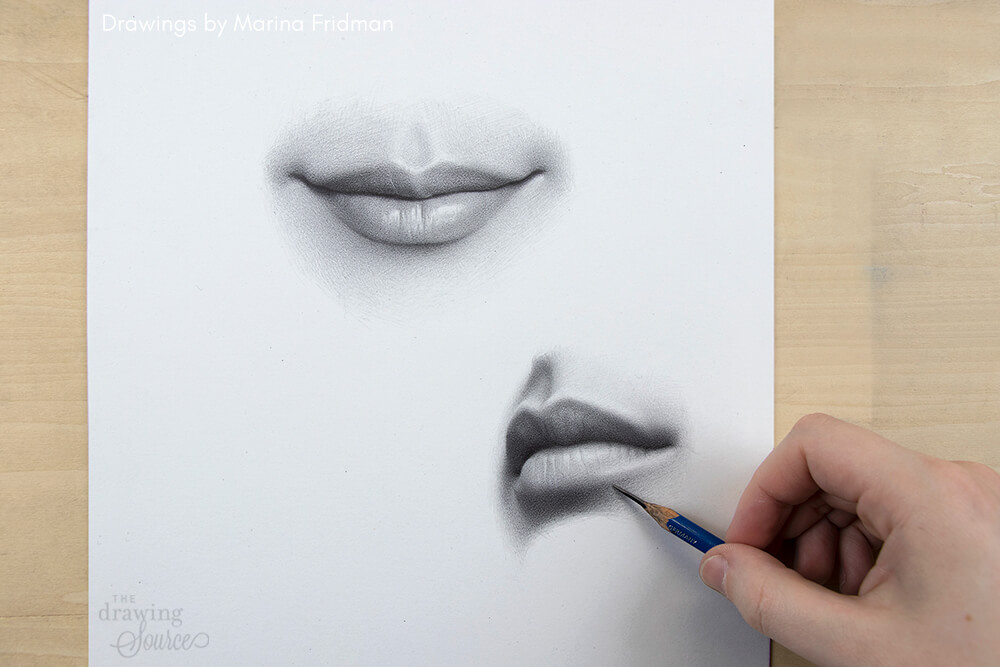 Realistic lip drawings by Marina Fridman
Realistic lip drawings by Marina Fridman
Downloadable Resources
Enjoyed this page? Please share it!
Share buttons and pinnable image below:
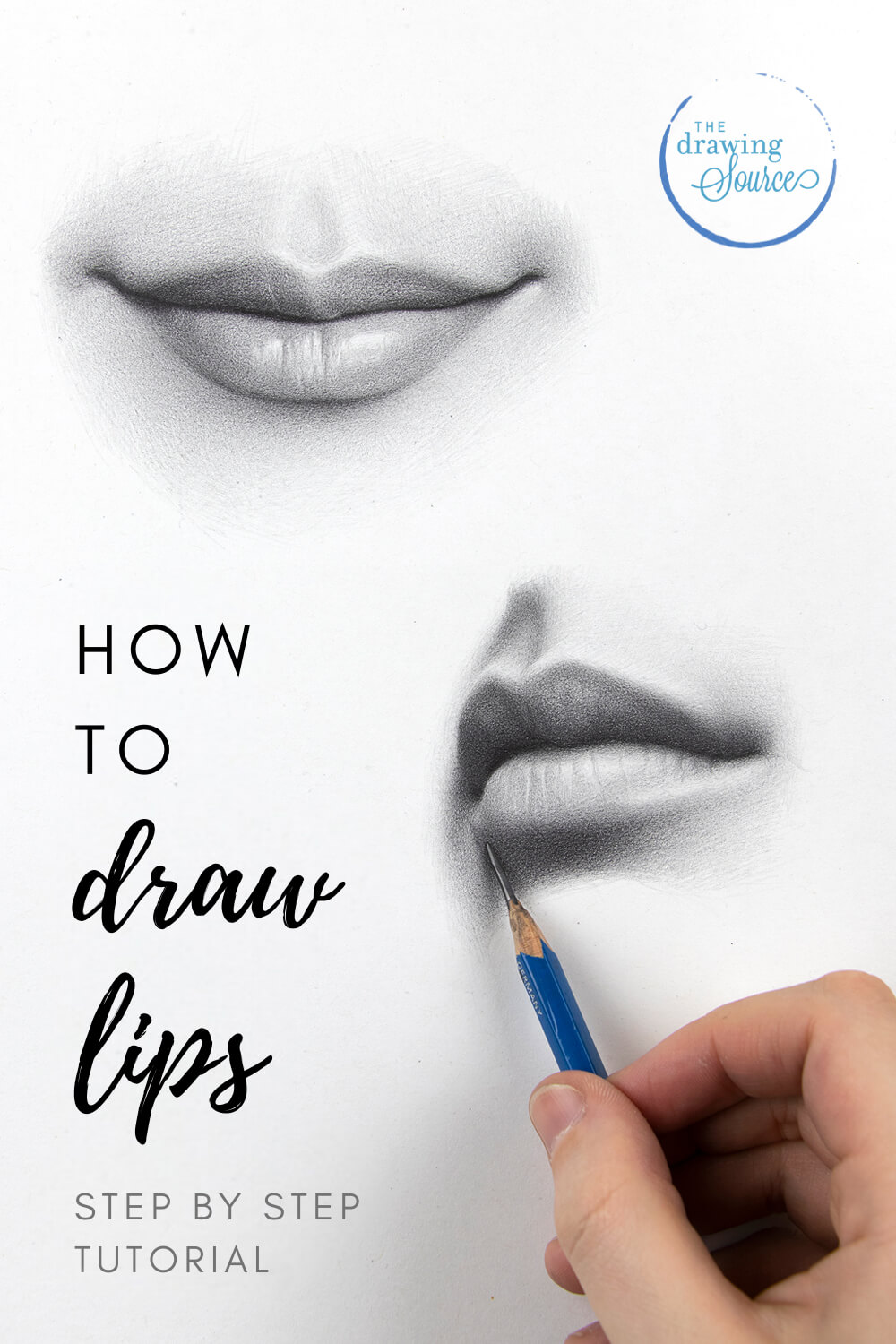
If you enjoyed this page on how to draw lips step by step, you may also be interested in:
Related Pages
How to Draw an Ear on Toned Paper
Return to Portrait Drawing from How to Draw Lips Step by Step
Return to Drawing Tutorials from How to Draw Lips Step by Step
Return to the Homepage from How to Draw Lips Step by Step



